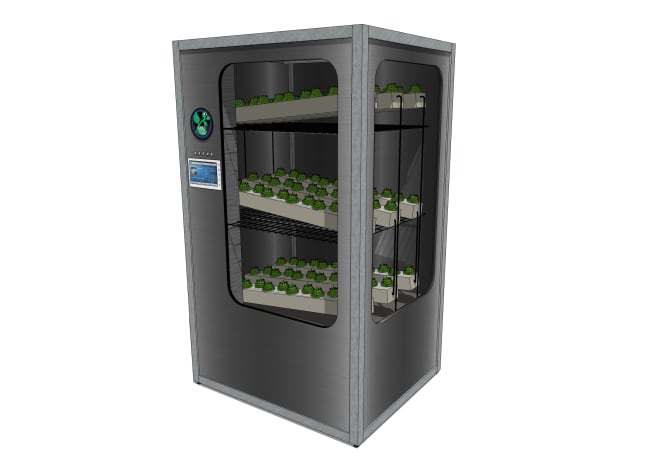Fresh vegetables on the moon
NASA, in conjunction with its international and commercial partners, is planning to land the next humans on the moon by 2024. And this time they want to stay. But how can humans survive in such extreme conditions? One of the major challenges is to secure food. The soil does not contain all the nutrients for plants and the sites themselves are unsuitable for life.
We are the SWAG team - four environmental engineering students - and have been working on this challenge for one and a half years. For the second time we are participating in the international student project «IGLUNA» launched by the Swiss Pace Center. In this project, students work for 9 months in different teams and develop their own space technologies, which are then tested and presented. This year, our model will be tested under extreme mountain conditions on Mount Pilatus and remote-controlled from the Swiss Museum of Transport in Lucerne. The project can be viewed from 10-19 July 2020 at the Museum of Transport in Lucerne and on Mount Pilatus.
Building our own innovative project
The SWAG team is developing a system in which plants can be grown anywhere, regardless of location. With the help of the most modern technologies, an environment is created which allows the plants to grow under optimal conditions. Sensors monitor the temperature, humidity and carbon dioxide content in the plant so that these are automatically adjusted in case of fluctuations.
The system incorporates specially developed, unique lamps that can simulate every phase of the day’s sunlight. These simulate the correct light spectra for the plants at all times. The vegetables themselves grow in a hydroponic system also known as «hors sol» (without soil). The plants are in a nutrient solution. The fertilizer solution, as well as the concentration of the various nutrients, is monitored and controlled by the overall system. A long-term goal is to use all nutrients from the only organic source available on the moon: human urine and feces.
Your financial support enables the success of our project
We are working on this space project with great commitment and passion. Despite support from our university, the costs of the project exceed our financial possibilities. In order to be able to realize our research work and our project as planned, we are dependent on your support.
-
If we receive a total of Fr. 6000 through the crowdfunding, we can use this money to finance the basis of the facility: sensors, wiring, motors, and hydroponics (plastic channels).
-
If we receive a total of Fr. 10’000.- from the crowdfunding, then we can expand our system: The structure is partly financed, and several self-designed lamps can be installed in the system.
-
If we receive a total of CHF 20,000 from the crowdfunding, we can equip our system with self-developed aluminium water channels, which are modular and adaptable to any type of vegetable. We can also install more precise sensors and automate the entire system.
Thanks for your support.




